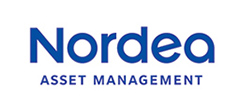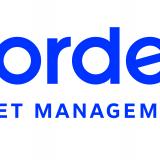
Looking back two years, can you still remember the shortage of numerous products towards the end of the pandemic? Consumers were facing shortfalls of products ranging from televisions and cellphones to cars, WiFi routers, medical devices and gaming consoles, among many other things. A central reason was a global shortage of semiconductors, also known as microchips and integrated circuits, mainly due to the effects of the Corona crisis causing disruptions in the supply chain.
Semiconductors – indispensable for our daily life
The shortage of semiconductors had a serious impact on industrial companies worldwide. The automotive industry was hit hardest: production lines been stopped, employees were put on short-time work, new cars had an analogue speedometer instead of a digital version or had to do without certain assistance systems. But a lack of microprocessors didn’t hit only the automotive industry hard. Consulting firm Goldman Sachs identified 169 industries that suffered from the ongoing chip shortage[1].
Digitalization and therefore microelectronics are moving into all areas of life. With their diverse areas of application, semiconductors play a central role in the materials of electronics and energy technology. Emerging and rapidly evolving trends like autonomous vehicles, artificial intelligence (AI), the cloud, Internet of things (IoT) and 5G are transforming everything we know about mobility, connectivity, and security―from the way we consume and experience information to how we view data privacy and ensure our personal safety. These innovations are all possible because of complex silicon chips and powerful software code.
Enabler of the green transformation
Semiconductors are crucial enablers of green and digital economies. The future of “Smart Everything” depends on silicon chips running faster, scaling down to fit into smaller devices, integrating more capabilities, and processing massive amounts of data reliably – all while consuming less power.
As such, semiconductors are a central component of the green transformation for harnessing, converting, transferring and storing renewable energy with minimal loss of power and also for reducing energy demand of electronic devices. Yet our reliance on semiconductor also poses another challenge on our growing energy consumption and implementing solutions to improve their efficiency is crucial - designing for low power and energy consumption optimization are essential issues for today’s chip developers.
EDA – Imprinting the future of semiconductors
Semiconductor chips are incredibly complex. State-of-the-art devices can contain over one billion circuit elements. There is simply no way to manage this level of complexity without sophisticated automation. Electronic Design Automation (EDA) provides this critical technology.
EDA is a set of software, hardware and essential services for designing semiconductor devices, computer chips, and electronic systems such as integrated circuits and printed circuit boards. Without this technology, it would be impossible to design and manufacture today’s semiconductor devices – decarbonization to meet the goals set by the Paris agreement would be impossible. As one of the key players of the green transition the EDA industry is expected to show a compound annual growth of 10% until 2032[2] with revenues of USD 19bn at the end of 2028.[3]
Cadence – a large player in a crucial industry
In this industry with high relevance to the global economy, US company Cadence Design Systems is one of the largest provider of EDA technology with a market share of 30% while dominating the analog design part of the market with around 70% share.[4]
Cadence is an American multinational company, providing computational soft- and hardware required for the entire electronics design chain, from chip design to chip packaging to boards and to systems.
In Q3 2023 Cadence showed a revenue growth of 13% compared to Q3 2022, exceeding the average annual revenue growth of 11.9% since 2016.[5] The company generates 85-90% of its revenues on a recurring basis with average renewable license duration of 2-3 years – providing a high visibility of revenue stream looking forward. A Non-GAAP operating margin of 40%5 underlines Cadence’s high profitability and solid business model.
Powering a smarter and cleaner future
The company’s contribution to sustainability is indirect as Cadence is an enabler of progress but does not influence the end-use product. But this doesn’t diminish the importance of the company’s role in paving the way towards a cleaner future.
More efficient and higher-capacity computer chips are needed to facilitate the upgrade of infrastructure and help retrofit industries to make them sustainable, with increased resource-use efficiency and greater adoption of clean and environmentally sound technologies and industrial processes.
Cadence technology is here a key to higher resource efficiency. Through the ongoing work to reduce the power consumption of chips, as well as significantly cutting the time it takes to design a chip and improve the overall quality of the design, Cadence technology has taken a key role in reducing greenhouse gas emissions.
As a leading supplier of interface, memory, analog and physical Intellectual Property (IP), Cadence helps customers reduce chip design costs, lower risk and speed time-to-market. By using Cadence technology and software like Cadence JedAI, Stratus High-Level Synthesis or the AI-driven Cadence Cerebrus, clients can optimize their semiconductor chip design resulting in an up to ten times higher productivity[6], 50% reduction of power usage[7] and a 38% diminished loss in leakage power.[8]
In its ambition to stay ahead of the pack, Cadence is investing strongly in the future. From 2019 to 2023 the R&D expenditures grew from USD 0.94bn to 1.42 bn – a plus of 51% within 5 years.[9]
Resource efficiency
One of the three core pillars of Nordea’s Global Climate and Environment Strategy is resource efficiency. Many companies that offer products and services in this area seek both attractive value propositions and strong environmental benefits. We truly believe that investing in companies that use technology and innovation to save resources and improve efficiency is a win for investors and the planet.
Reference to companies or other investments mentioned should not be construed as a recommendation to the investor to buy or sell the same but is included for the purpose of illustration. No representation is being made that such security will continue to be held or if it was or will be profitable.
Nordea Asset Management is the functional name of the asset management business conducted by the legal entities Nordea Investment Funds S.A. and Nordea Investment Management AB and their branches and subsidiaries. This material is intended to provide the reader with information on Nordea Asset Management specific capabilities, general market activity or industry trends and is not intended to be relied upon as a forecast or research. This material, or any views or opinions expressed herein, does not amount to an investment advice nor does it constitute a recommendation to buy, sell or invest in any financial product, investment structure or instrument, to enter into or unwind any transaction or to participate in any particular trading strategy. Unless otherwise stated, all views expressed are those Nordea Asset Management. Views and opinions reflect the current economic market conditions, and are subject to change. Any investment decision should be based on the Offering Memorandum or any similar contractual arrangement. All investments involve risks; losses may be made. While the information herein is considered to be correct, no representation or warranty can be given on the ultimate accuracy or completeness of such information. Prospective investors or counterparties should discuss with their professional tax, legal, accounting and other adviser(s) with regards to the potential effect of any investment that they may enter into, including the possible risks and benefits of such investment, and independently evaluate the tax implications, suitability and appropriateness of such potential investments. Published by the relevant Nordea Asset Management entity. Nordea Investment Management AB and Nordea Investment Funds S.A. are licensed and supervised by the Financial Supervisory Authority in Sweden and Luxembourg respectively. This material may not be reproduced or circulated without prior permission. © Nordea Asset Management.
In the United Kingdom: Published by Nordea Asset Management UK Limited, a private limited company incorporated in England and Wales with registered number 11297178; which is authorised and regulated by the Financial Conduct Authority. Registered office at 5 Aldermanbury Square, London, United Kingdom, EC2V 7AZ.
In Switzerland: Published by Nordea Asset Management Schweiz GmbH, which is registered under the number CHE-218.498.072 and authorised in Switzerland by FINMA.
In Singapore: For institutional investors only. Published by Nordea Asset Management Singapore, which is regulated by the Monetary Authority of Singapore (company registration number: 202219416W). The address of Nordea Asset Management Singapore is 138 Market Street, #05-01 CapitaGreen, Singapore 048946.
[1] Howley, Daniel (April 2021). "These 169 industries are being hit by the global chip shortages"
[2] Global Market Insight, Nov.2023 (https://www.gminsights.com/industry-analysis/electronic-design-automati…)
[3] BlueWeave Consulting, Sept. 2022
[4] ESDA, Company reports, BofA Global Research (October 2023).
[5] Cadence Company Overview Presentation - Q3 2023. Operating margin: Non-GAAP operating margin.
[6] According to Forbes, 13.06.2023 “Cadence JedAI Can Increase Chip Design Quality And Chip Designer Productivity Over 1000%” (10 times engineering hours improvement with Mobile CPU in 3nm).
[7] Cadence Datasheet “Stratus High-Level Synthesis”
[8] Cadence 12.10.2023: “Imagination Optimizes PPA and Speeds the Delivery of Low-Power GPUs Using AI-Driven Cadence Cerebrus in the OnCloud Platform”
[9] Macrotrends. January 2024 (https://www.macrotrends.net/stocks/charts/CDNS/cadence-design-systems/research-development-expenses). Data as of 30.09.2023.



